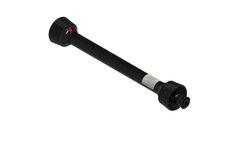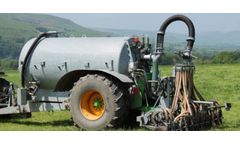Crop Fertilization Articles & Analysis
62 articles found
The market is segmented into fertilizers, pesticides, adjuvants, and plant growth regulators, with key applications in crop-based and non-crop-based sectors. ...
It can not only be used as a clean energy to replace traditional coal and reduce environmental pollution, but also as a soil conditioner in agriculture to improve soil fertility and crop yields. In the field of environmental protection, the adsorption properties of biomass carbon make it an ideal adsorbent for water treatment and air purification. ...
Agricultural Enzymes Agricultural enzymes, sourced from microorganisms like fungi and bacteria, are catalyst that accelerates the chemical reaction that unblocks the nutrients present in the soil, and helps increase crop production, soil fertility, and food protection. The most commonly used enzymes in plant growth and soil fertility are ...
Agricultural Enzymes Agricultural enzymes, sourced from microorganisms like fungi and bacteria, are catalyst that accelerates the chemical reaction that unblocks the nutrients present in the soil, and helps increase crop production, soil fertility, and food protection. The most commonly used enzymes in plant growth and soil fertility are ...
Agricultural Enzymes Agricultural enzymes, sourced from microorganisms like fungi and bacteria, are catalyst that accelerates the chemical reaction that unblocks the nutrients present in the soil, and helps increase crop production, soil fertility, and food protection. The most commonly used enzymes in plant growth and soil fertility are ...
A review of various surveys on the state of agriculture revealed a connection between low crop yields, reduced incomes, and soil fertility constraints, particularly soil acidity. ...
Avoid excess crop nutrients in your fertilizer strategy to maintain soil health and protect your pocketbook The push to produce higher yields per acre every year continues to weigh heavily on western Canadian farmers. ...
During drought or dry conditions, salinity and pH levels can change quickly in the soil. While the forecast shouldn’t entirely dictate how you manage your farm, understanding and performing the best farming practices when adding seed-placed nutrients can help save your yields when the rain fails to ...
Though it is the foundation of life, soil constitutes only a thin layer of material on the surface of our planet. It provides the necessary weathered minerals, organic materials, air, and water, which are the most precious resources for all living creatures. Plants find life in soil, as it provides a rooting medium and nutrient source for plants to grow. Through healthy plants, ...
“There are different types of soil on top of the hill versus down in the bottom of a little dip,” which affect its nutritional contents and potential for crop output. Fertilizer Canada lays out the “Four Rs” of contemporary nutrient stewardship: using the right source at the right rate, the right time and the right place. ...
Spreaders for manure: A spreader is used to spread manure across fields to help fertilize crops. The spreader is driven by the tractor PTO shaft, which is turned by the chains and gears that distribute the manure. ...
BiOWiSH Technologies, Inc. engaged North Dakota State University as a third party Contract Research Organization (CRO) to conduct a study to determine the effects of BiOWiSH Crop Liquid coated fertilizer on potato production in eastern North Dakota ...
Indexes plant health status throughout the crop cycle. Predicts best fertilizing windows and computing the most cost-efficient amount of inputs based on crop status, input costs, predictive yields and crop value. ...
ByAGRIVI
Slurry is created from cow manure and water and provides a fantastic, natural fertiliser that farmers can use to encourage the growth of grass and other crops. It is usually stored in a slurry tank or lagoon before it is applied to farmland as fertiliser. ...
Craig Bews adopted variable rate technology on his Eatonia, SK farm over a decade ago. Bews has always had a passion for farming. A third generation farmer, Bews and his son, Darren, farm 10,000 acres in west central Saskatchewan. After trying a variety of crops over the years, they now grow primarily durum, canola and red lentils. The name ‘Duthie Farms’ derives from Craig’s ...
Fertile land and water quality also determine crop production. The workforce capacity and capability limitation are tricky to monitor and analyze every inch on the vast plantations area. ...
Dosage of liquid fertilizers Liquid mineral fertilizers have already proven their advantages over granular fertilizers, these namely are prolonged action and maximum absorption of the active substance. So here is the question, what is the most effective way of using liquid fertilizers? Taking into consideration the reasons for ...
Compound fertilizer is suitable for all kinds of soil, wheat, corn, melon and fruit, peanut, vegetables, beans, flowers, fruit trees and other crops and economic crops. It is suitable for base fertilizer, seed fertilizer, topdressing, seed fertilizer and flushing application. ...
Compared with SO42 -, the effect of sulfur as sulfur fertilizer on crops depends on the particle size, application rate, application mode, sulfur oxidation performance of soil and environmental conditions. ...
Slurry is created from cow manure and water and provides a fantastic, natural fertiliser that farmers can use to encourage the growth of grass and other crops. It is usually stored in a slurry tank or lagoon before it is applied to farmland as fertiliser. The dangers of working with slurry are well documented, as high amounts of gases can be released very quickly. How is farm slurry made? Waste ...













